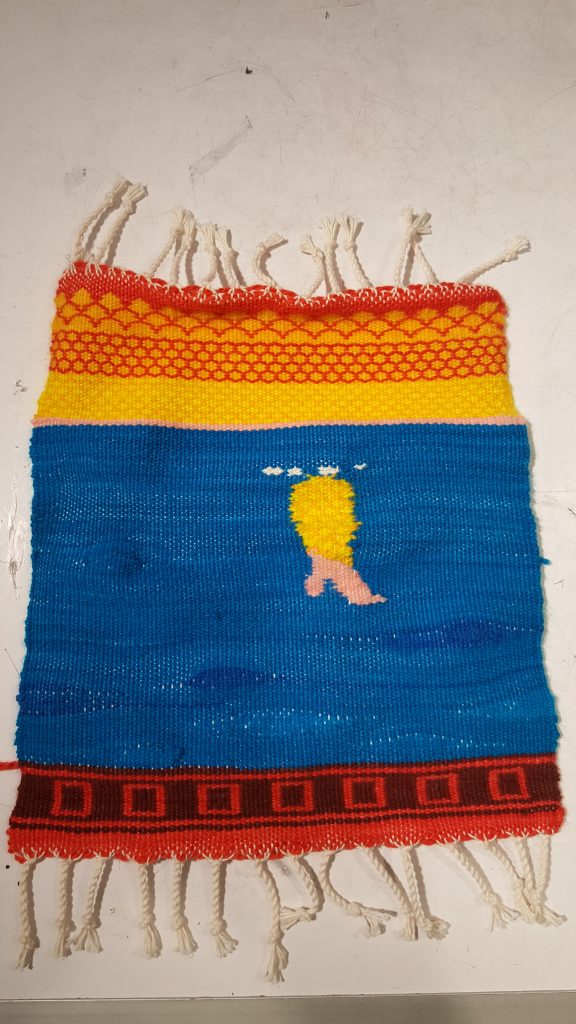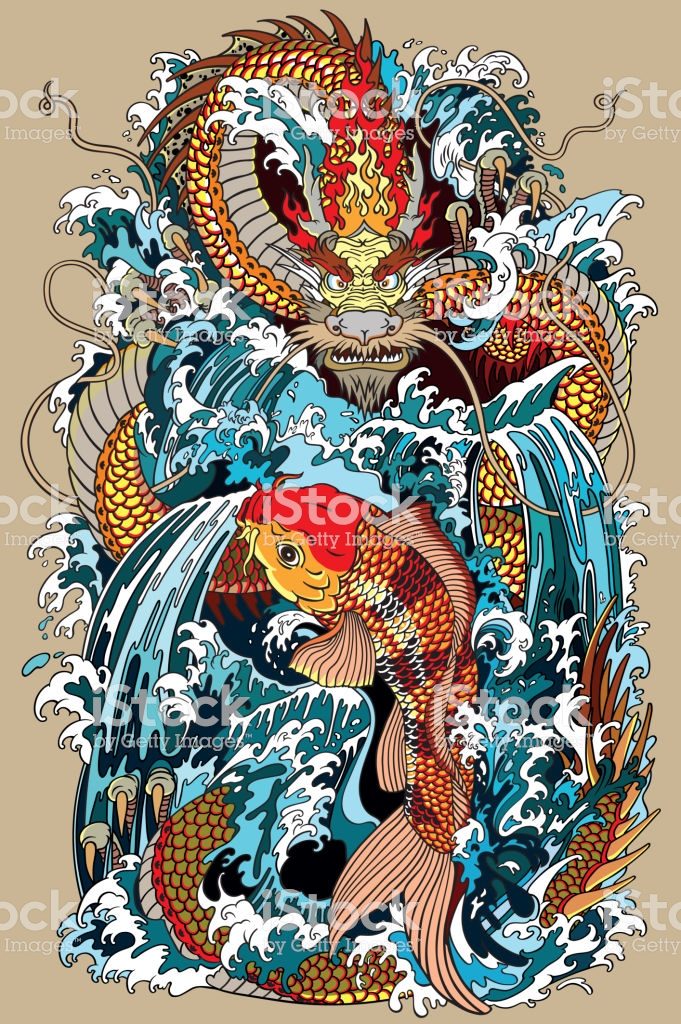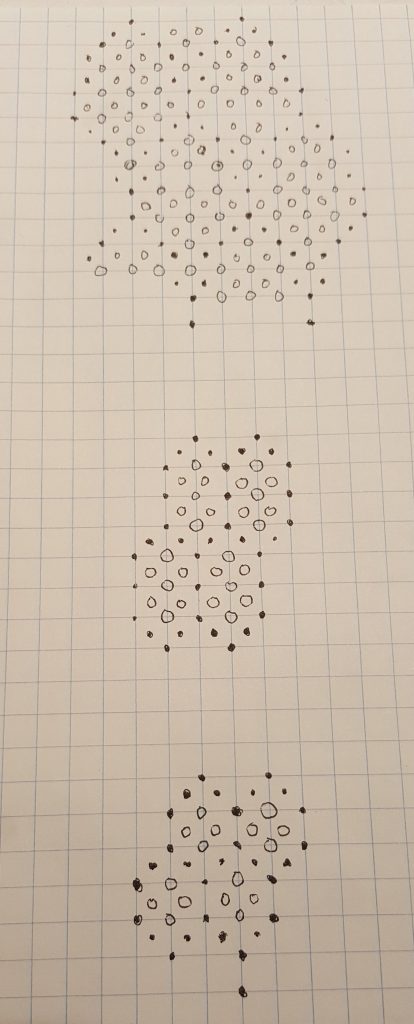Lucian Hodor Weaving

For my final weaving I created a scene out of Chinese mythology.
Original Intentions
My original intentions for my final weaving was to recreate the scene of the carp leaping over the dragon gate to become a true dragon. I knew from the beginning that I wanted to weave geometric patterns on the top and bottom edges and then weave an image into the middle of my tapestry. I picked this myth for three reasons: the abundance of subtly different turquoise yarns available, the challenge of weaving a pattern into the middle of an image, and the admiration I feel towards this particular legend.

The yarns available seemed to shout at me to create an ocean landscape. I would be able to use changes in pattern and color to give an impression of flowing 3D water while keeping a “flat and simple” weave. From my sample weave I had already fallen in love with weaving both landscapes and patterns, as seen below, and challenging myself to incorporate them both into one image seemed perfect at the time.

Process
Throughout my weaving I used only yarns from the class yarn supply. This was mostly a result of my original plan centering around the colors already available. In terms of technique, multiple shuttle and butterflies were implemented to weave each row one at a time with the exception of the shapes woven into the water section. This was in order the allow the weft threads to wrap around the added sections creating a wavy pattern throughout the blue.
I had already been weaving for 8 hours by the time I arrived at the midsection of the fish. At that point I realized that not only was there not enough time to finish what I had originally planned, but I also had no ability to weave the head of the fish into the piece and have it be recognizable. This led to a change in plans to having the fish dive into the water and using the rest of the weaving to try out different designs for scales. Using graph paper as shown in one of the first presentations on weaving, I created 3 different patterns for scales that I then used to create the top portion of my weaving. Each of the rows in these patterns was made using 2 shuttles of different colors traveling between or below the warp threads to create color differences in the cells. In fact it was only after creating the patterns that I realized that the first 2 can both be woven using the Krokbragd pattern and method of weaving.


Learning
In the final weaving I was definitely too ambitious for the scale of the project. But I also learned that even if you change plans halfway through the project, it is possible to create a final piece that holds more meaning than the original. There are many subtle details about the finished piece that are more refined and give off an overall feeling that I appreciate much more that what could have been. If given the time and opportunity to weave again I would definitely explore using different yarn textures and thicknesses to allow for greater flexibility and creativity in ideas and patterns.